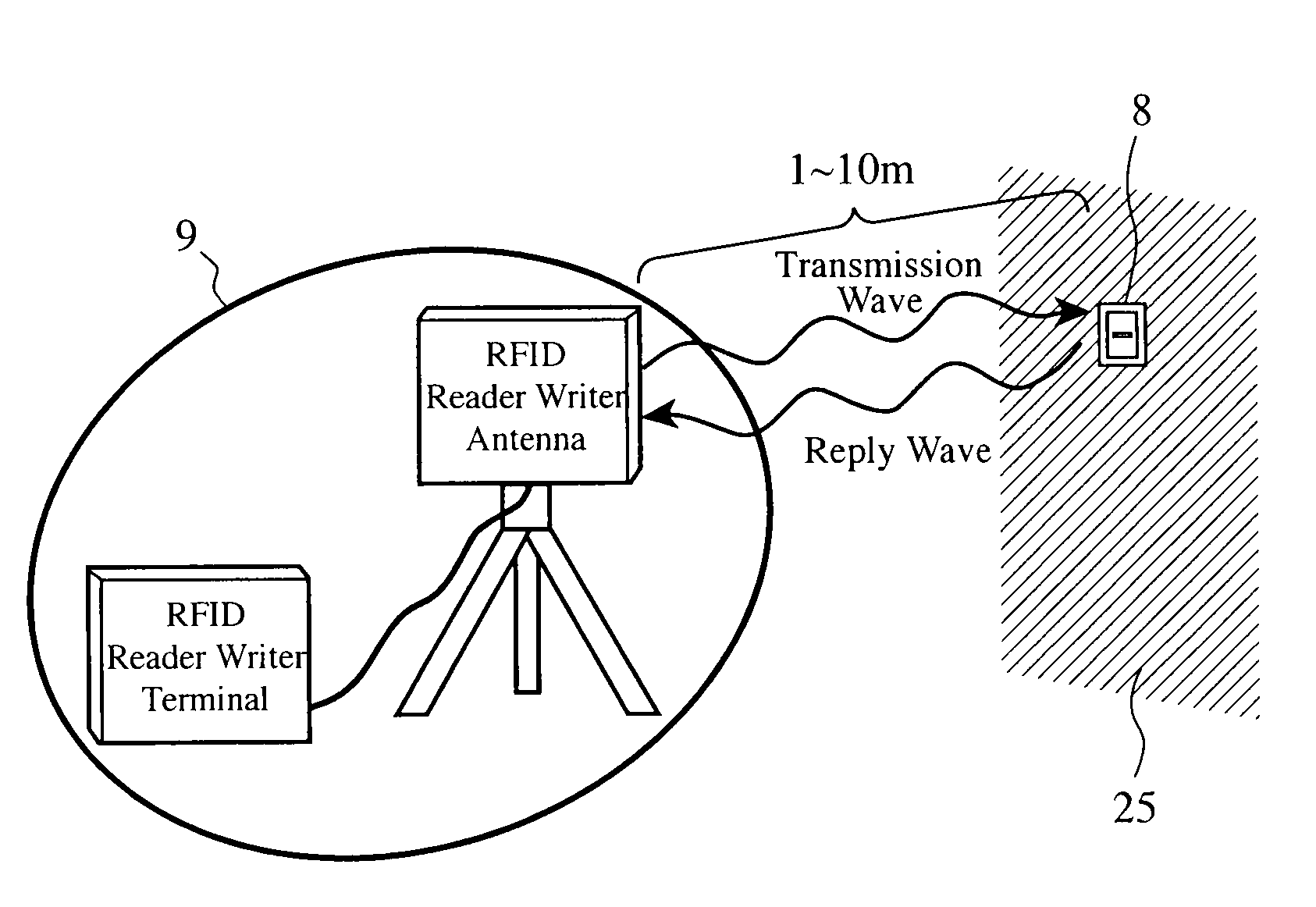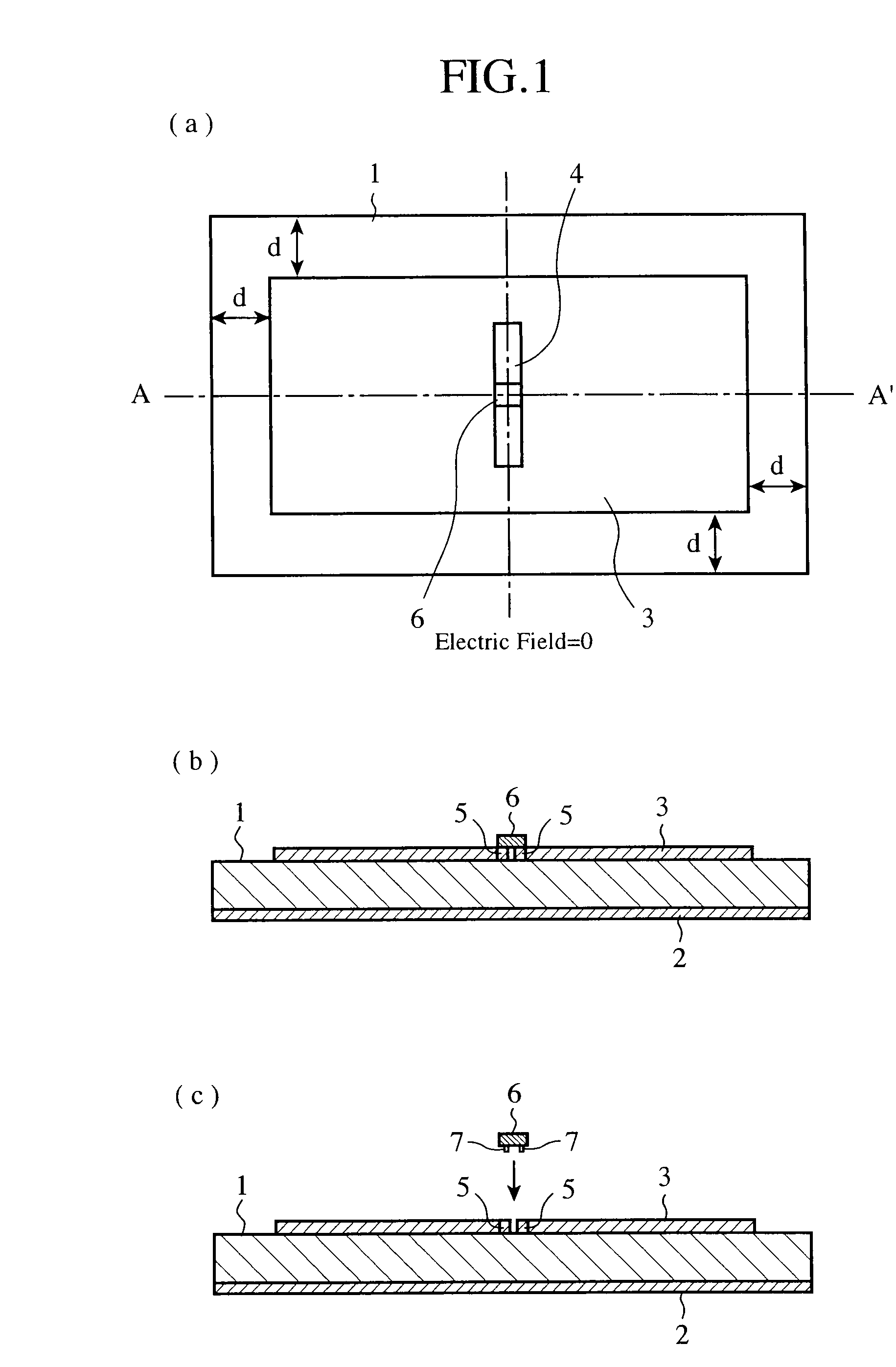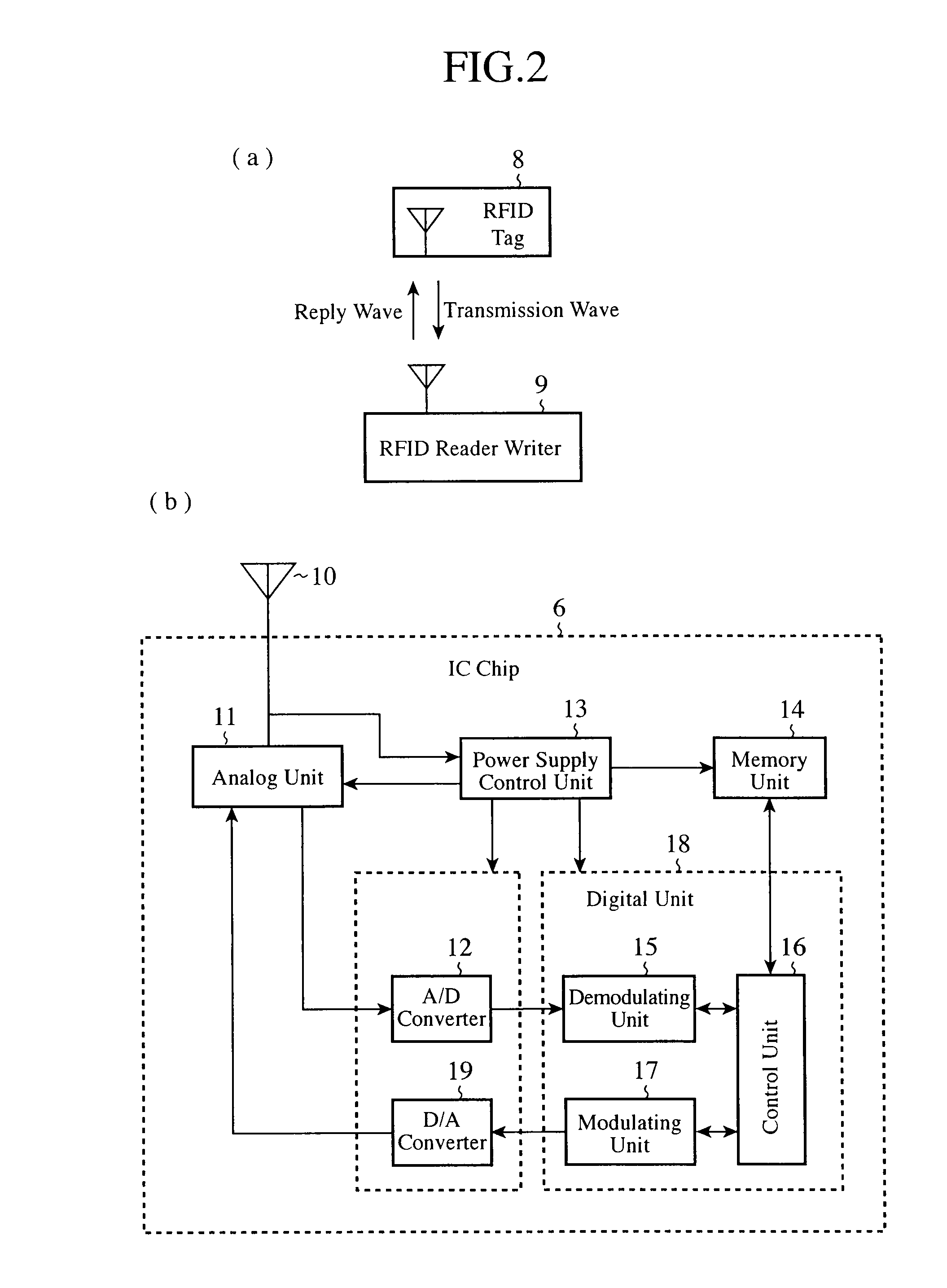Rfid Tag, Method For Manufacturing Rfid Tag and Method For Arranging Rfid Tag
a technology of rfid tags and tags, applied in the field of rfid tags, can solve the problems of enlargement of the size of the active type tag, high cost, and impossibility of mounting locations, and achieve the effect of more stable long-distance radio communication and increased flexibility of mounting locations
- Summary
- Abstract
- Description
- Claims
- Application Information
AI Technical Summary
Benefits of technology
Problems solved by technology
Method used
Image
Examples
embodiment 1
[0121]Hereafter, Embodiment 1 of the present invention will be explained with reference to FIGS. 1 to 6. FIG. 1 is a structural diagram of an RFID tag in accordance with Embodiment 1, FIG. 1(a) is a surface view of a dielectric substrate, FIG. 1(b) is a partially sectional view 1 of the dielectric substrate taken along the line A-A′, FIG. 1(c) is a partially sectional view 2 of the dielectric substrate taken along the line A-A′, FIG. 2 is a basic block diagram of an RFID system, FIG. 2(a) is a diagram of the RFID system, FIG. 2(b) is a functional block diagram of the RFID tag, FIG. 3 is a graphical representation of an electric field of the RFID tag, FIG. 4 is a drawing of the characteristic impedance of the RFID tag in accordance with Embodiment 1, FIG. 5 is a drawing showing that electrical connecting portions of the RFID tag in accordance with Embodiment 1 of the present invention are exposed, FIG. 5(a) is a drawing of a 2-terminal example of the RFID tag, FIG. 5(b) is a drawing ...
embodiment 2
[0128]Embodiment 2 of the present invention will be explained with reference to FIGS. 7 to 10. FIG. 7 is a structural diagram of an RFID tag in accordance with Embodiment 2, FIG. 8 is a structural diagram of an RFID tag in accordance with Embodiment 2, FIG. 9 is an enlarged view of a slot of the RFID tag in accordance with Embodiment 2, FIG. 9(a) is an enlarged view of the slot before an IC chip is mounted, FIG. 9(b) is an enlarged view of the slot after the IC chip is mounted, and FIG. 10 is a structural diagram of an RFID tag in accordance with Embodiment 2. In FIGS. 7 to 10, reference numeral 21 denotes an electric length adjusting portion disposed in a side edge of a patch conductor portion 3 and cut in certain shape, reference numeral 22 denotes a taper-shaped slot formed in such a manner as to become wider along both directions of being spaced apart from a position where an IC chip 6 is placed, and reference numeral 23 denotes a slot which is formed at a certain angle with res...
embodiment 3
[0132]Embodiment 3 of the present invention will be explained with reference to FIGS. 11 and 12. FIG. 11 shows the structural diagram of an RFID tag in accordance with Embodiment 3, FIG. 11(a) shows a patch conductor surface of the RFID tag, FIG. 11(b) shows a ground conductor surface (with no bonding layer) of the RFID tag, FIG. 11(c) shows a ground conductor surface (with a bonding layer) of the RFID tag, and FIG. 12 is a configuration diagram of an RFID system in accordance with Embodiment 3. In FIGS. 11 and 12, reference numeral 24 denotes a bonding layer, and reference numeral 25 denotes a mounting surface. In the figures, the same reference numerals denote the same components or like components, and the detailed explanation of them will be omitted hereafter. In the RFID tag 8 of FIG. 11, the bonding layer 24 is disposed on a surface of the ground conductor portion 2, and an adhesive bond, a double-faced tape, or the like can be used as the bonding layer 24. A method of applyin...
PUM
 Login to View More
Login to View More Abstract
Description
Claims
Application Information
 Login to View More
Login to View More - R&D
- Intellectual Property
- Life Sciences
- Materials
- Tech Scout
- Unparalleled Data Quality
- Higher Quality Content
- 60% Fewer Hallucinations
Browse by: Latest US Patents, China's latest patents, Technical Efficacy Thesaurus, Application Domain, Technology Topic, Popular Technical Reports.
© 2025 PatSnap. All rights reserved.Legal|Privacy policy|Modern Slavery Act Transparency Statement|Sitemap|About US| Contact US: help@patsnap.com



